Have an upcoming trip and nervous about either an unfamiliar border crossing or some aspect of dealing with aggressive locals? Don’t worry, we’ve all been there and this post can help prepare you for dealing with anyone from pushy local touts to overly aggressive taxi drivers.
As any seasoned traveler can tell you, airports, train stations, land border crossings and ship ports can be home to some of the most stressful moments while traveling. The truth is, no matter where you go, arriving in a new destination can be disorienting.
Foreign languages, unfamiliar customs, fear of being scammed, and the uncertainty of how to get where you need to go can all play havoc as you leave one country and enter another. While smaller crossings can seem the quietest or easiest, that’s not always the case when you’re in a foreign country and the lack of infrastructure at a smaller terminal can actually makes things worse.
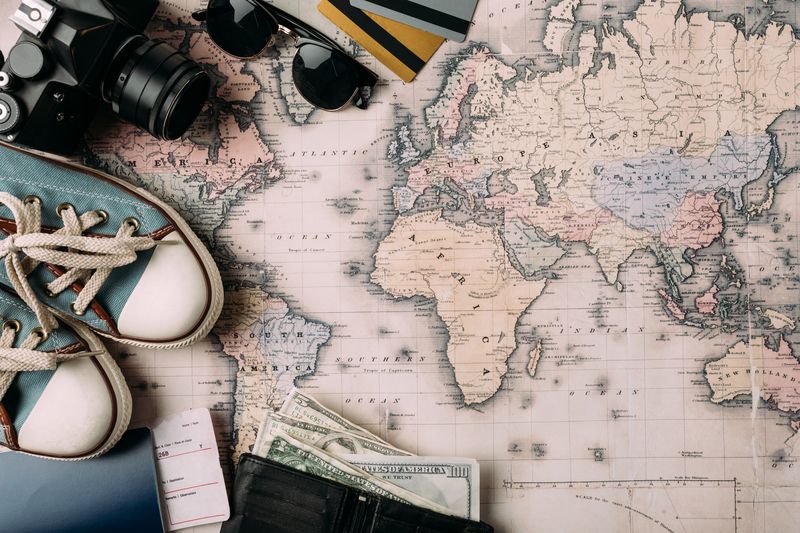
Sometimes the sheer size of the airport, bus terminal or port can be overwhelming and leave you lost. Couple that with time changes, heightened security, a mountain of baggage, jet lag, lack of movement for hours on end and differences in air pressure, heat and even humidity can often make you wonder if leaving home is worth all the aggravation.
More travel tips:
- Our Best Holiday Travel Tips and Hacks
- Budget Travel Tips for Your Family Vacation to Europe
- 25 Great Tips For Planning Your Trip From Top Travel Bloggers
- 13 Expert Tips for Family Travel on a Budget
We can honestly say that while we love to travel, and having been to the far corners of the world and back again, dealing with hectic border crossings can tire out even the seasoned traveler. While those moments are often few and far for most trips, they can still lead to panic for those not accustomed to some of the worlds more zanier border crossings.
In this post I’m going to list a few of our more memorable border crossings, how we dealt with them and the lessons we learned. Don’t worry, once you read everything you’ll be crossing borders like a pro too!
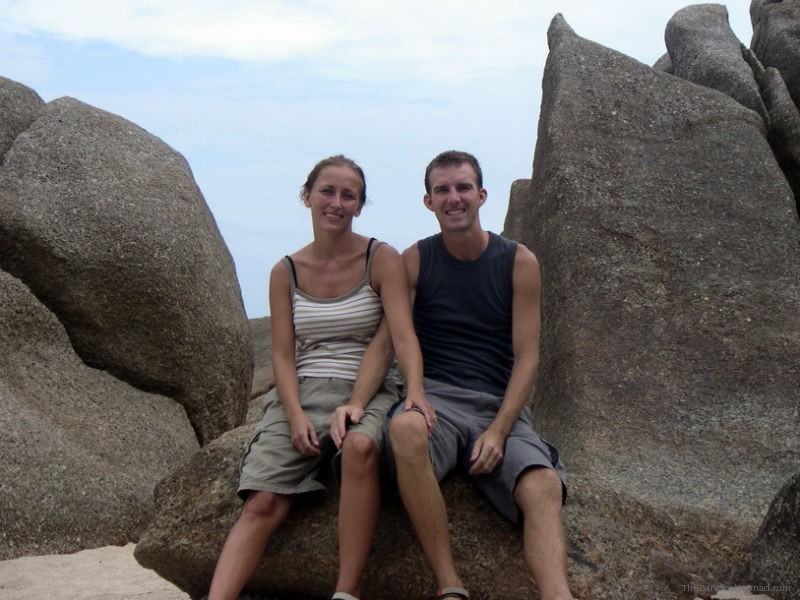
Dealing with touts. Pick me! Pick me!
One of the most chaotic moments for any traveler, whether they’re seasoned pros or first time out-of-towners, is going to be dealing with touts as they enter or leave a country.
Tout (noun).
A person soliciting custom or business, typically in an aggressive or bold manner.
The truth is, touts flock to ports and airports for exactly the same reasons you hate being there. You’re tired, and a little unsure about your next step, and the touts are ready to use that to their advantage.
Nowhere in our travels was this more evident than when we arrived via ferry from the relative calm of Melaka, Malaysia into the craziness of Dumai on the island of Sumatra in Indonesia. The day we stepped off the ferry in Dumai, craziness literally engulfed us.

After one of the coldest ferry rides in the known universe (seriously, it was sweltering outside but we could see our breath inside the air conditioned ferry), we made our way from the water ferry to the small building welcoming us into the country. Before a single person even exited the water ferry, the local touts were already shouting to get our attention. Luckily, they were still far enough away that each voice was indistinct, but as we left the building after passing through customs, the real chaos erupted.
As we walked the long fenced off ramp down to the landing, what seemed like hundreds of voices were shouting at us to use their taxi, take their tour or come to their hotel. The volume was insane. At that moment, Micki and I severely questioned our decision to come to Indonesia.
The closer we got to the end of the ramp, it got even worse as hundreds of arms tried to grab us to get our attention. Imagine a hallway of arms and a hundred touts screaming for your attention (and not using their nice inside voices) and you might have an idea of our situation.
Luckily, we had read a little about this phenomenon and picked a random driver from the crowd and used them as a shield to further our escape. It seemed the moment we had chosen someone that the majority of the other touts backed away and looked for fresher meat.
We’re not sure we chose well or not, but our choice eventually lead to the most ridiculous, fingernails embedded in the dash, nine hour rally road ride of our lives but, as always, that’s another story.

Lessons learned about dealing with touts
We learned quite a few things that day, the least of which is that when arriving in another country, it’s important to always have a game plan and sometimes, the tout you choose isn’t as important as the speed of your decision.
When arriving in a new location, always know where you want to go and hold fast to your decision.
It also helps if you have a pre-booked room somewhere so the driver can’t supplant their choice of place (with a nice kickback for them) rather than yours.
While you’ll often be charged higher rates for taxi and bus rides from most ports (whether that be bus, train, air or ferry) compared to the average prices in town (don’t worry, it’s pretty much a universal thing in every country), try to have an idea of what it typically costs.

There are lots of websites out there where you can get that information, but in the end don’t be surprised if you have to pay more than you expect. If it’s a lot more, feel free to negotiate a better price or ask one of their competitors. Just realize that the majority of touts have a common number they’re going to tell you the first time you ask and it’s not often they’ll undercut someone who might be seen as a competitor to you, but could very well be a friend, family member or even someone working for the same company.
Another option is to push past the loudest and most aggressive touts and either seek someone less pushy or someone not actively seeking your business. We’ve found some of the best deals this way. However, we’ve occasionally gotten so far past the throng of touts that we can’t find any one willing to drive us to our hotel and had to double back.
A final option, depending on the port’s location, is to just walk directly to your hotel or take a local bus a block or two away from the port. Of course, this totally depends on the how close the port is to everything, so make sure you’ve done your homework before going this route. Also be mindful about security if you’re in a more dangerous country since straying from the norm could make you a target.
The slow bus from hell and chaotic border crossings
Transportation from one country to another can sometimes be tricky. Some places, like the Schengen countries in Europe, have no real border crossings, so going from place to place can be as simple as jumping on a bus and getting off at your destination.
While renting your own car is almost always an option to bounce between smaller countries, you’ll need to deal with unfamiliar driving laws and customs, likely need to get a car insurance quote , and possibly even drive on the wrong side of the road. There’s also a chance that the vehicle itself won’t be allowed over the border, due to insurance, ownership, or registration issues. We almost always take public transit across border crossings for that very reason to reduce hassle.
Tip! Don’t forget to get travel insurance for added safety.
Some border crossings require you to get off one bus and get onto another after passing through customs, though sometimes you get back on the same bus and keep traveling. These organized border crossing buses can be a boon or a bust depending on the situation.

No where was this more apparent to us than the time Micki and I crossed from Thailand into Cambodia. Rather than jumping on the backpacker bus out of Bangkok (widely known at the time as the slow bus from hell), we decided to go it ourselves.
After doing a bit of research, we settled on a plan. First, we would purchase tickets for a much nicer air conditioned bus that left hours later than the early morning backpacker bus. Once we got to the Cambodian border, we would pay our fee and cross over before hiring a private car to take us all the way to Siem Reap.
It all sounded easy on paper. However, the truth is the border crossing itself was insanely chaotic and left us doubting our choice to stray from the pack.
For instance, we knew there was a crossing fee, but there were people all over trying to collect it. Once the crossing fee nightmare was dealt with, finding a ride the rest of the way was a little crazy as well, since most of the people had passed through earlier and taken the best transportation.
Long story short, we finally found a car to take us to Siem Reap. A few minutes later, we passed the overloaded Backpacker bus that had left hours before ours. Not only was the bus traveling much slower than us, but they had their windows rolled down and the dust that was flying in through the open windows made everyone in it look dusty and miserable. The bus also seemed to bottom out on every pothole they passed, which couldn’t have been very fun.
As we cruised by in the comfort of our private air conditioned sedan, we realized that those few minutes of chaos at the border didn’t diminish the fact that we drove in comfort on both sides of the border for literally only a few dollars more and still arrived hours before the slow bus.
Lessons learned about chaotic border crossings
If you’re crossing a border in a foreign country and aren’t sure how it works, do some research. You can find nearly everything you need online. If you feel safe and comfortable doing so, don’t be afraid to leave the group and do your own thing. Not only can you often save money and time, you can often do it in greater comfort.
Also, especially at more chaotic border crossings, it’s always important to keep your head. Corruption is fairly rampant in many countries and the chance to pull a fast one over on a rich foreigner is often too easy for unscrupulous people to pass up regardless of how poor you might actually be. That’s why it’s important to mind your belongings, and definitely don’t be too ostentatious. Flashy rings and jewelry, as well as expensive clothes and luggage, only heightens the differences and can make you a target.

When it doubt as to whether someone is an official or not, best not to disrespect them. Feel free to question things, but don’t be belligerent or threatening. It won’t endear you to anyone and could land you into troubled water. If you did your research you should have a pretty good idea of what to expect regardless.
Some border crossings, like the Thailand-Cambodia one back then, are more of an outdoor free for all where buses, cars, people and officials all mill about. It was easy for people to think that an official looking person was actually an official and we had no less than five official looking people approach us for payment at different times. Turns out none of them were actual border officials, so we eventually found the person who was the real official, paid our amount and continued on our way.

Choose your routes carefully
The old saying that the journey is often greater than the destination isn’t wrong. Some of our strongest memories after years of travel are the moments in between destinations. While some see them as merely an inconvenience, we’ve realized that the journey can oftentimes outweigh the destination.
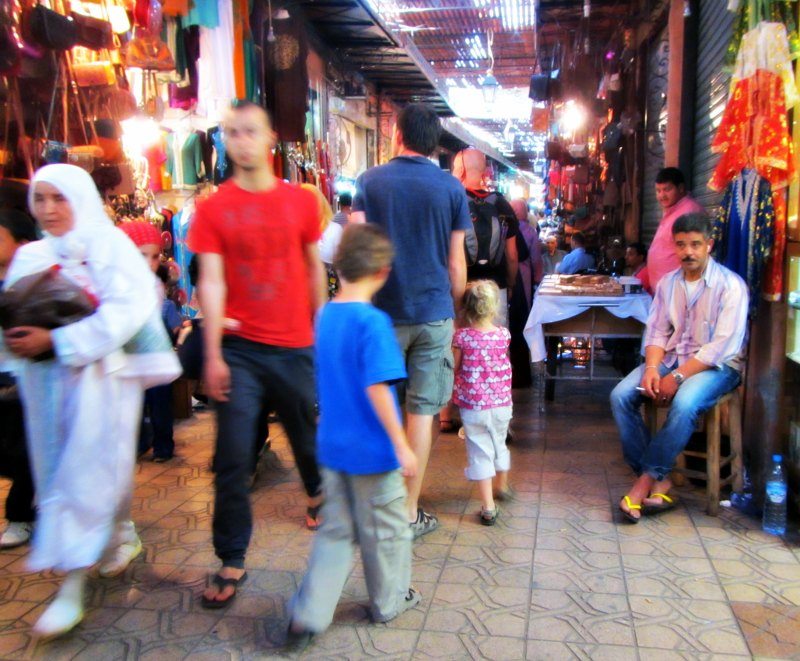
No where is this more apparent than when we went to Morocco with our kids. Instead of jumping on a cheap flight and being there in hours, we wanted to see some of the country from a different perspective. That’s why as we left Andalusia, Spain and crossed over the Strait of Gibraltar into Africa, we knew it was going to be a long day.

Forgoing a cheap flight, we decided to travel by every other mode of transportation possible to get into Morocco. By the time we had arrived at our Riad in Marrakesh, we had spent no less than 24 hours taking taxis, buses, a ferry and an overnight train to get there. Considering we had two young children in tow, it was a decent feat even for us.
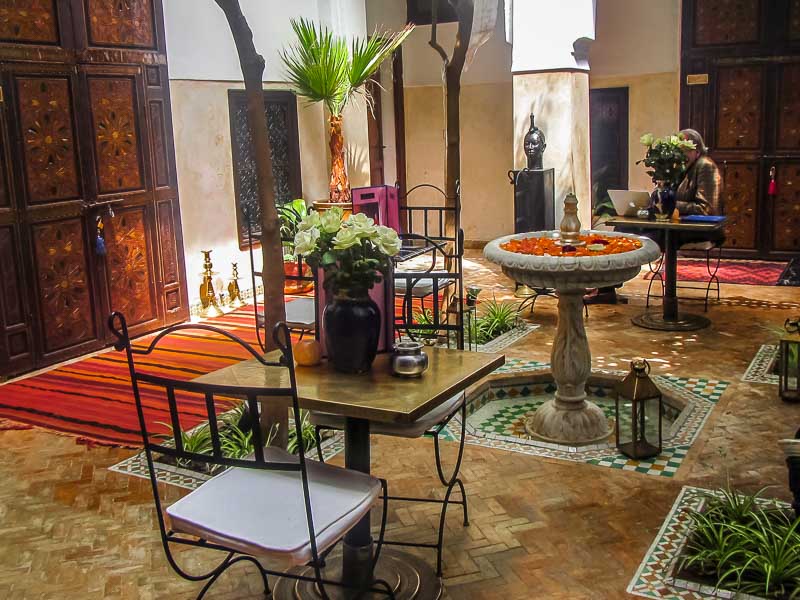
It was a great journey without any real problems. However, what probably saved us the most hassle was choosing a ferry that landed at the smaller port closer to town, rather than the main port on the outskirts. The caveat to that is we had to be pretty organized, considering that the ferry we chose only left twice a day.
Like a lot of port cities in poorer countries, Tangiers is also well known for its touts. Luckily, the port this particular ferry landed at had only a small fraction of touts the larger and busier port had. Since the smaller port was in town, we managed to get a local taxi that only charged us a few dollars to drop us off at a restaurant, where we killed a few hours before jumping on our overnight train.
The bonus is that the taxi driver liked us, so he waited while we ate. After that, he took us on a short tour of Tangiers before dropping us off at the train station. We gave him twice his asking rate simply because he was so helpful. Again, it never hurts to be nice and everyone benefitted.
Lessons learned from choosing your route wisely
By choosing our route carefully, we managed to make a long journey doable for a family of four with small children. We planned ahead, did a ton of research, had a few contingency plans in case something didn’t go as planned, and then actually enjoyed our journey.
That particular trip shows that timing matters at border crossings. We gave ourselves an extra hour here and there in case a bus ran late or we had trouble flagging down a taxi in time, a real problem we’ve had on numerous occasions where taxi service was a complete hit or miss.
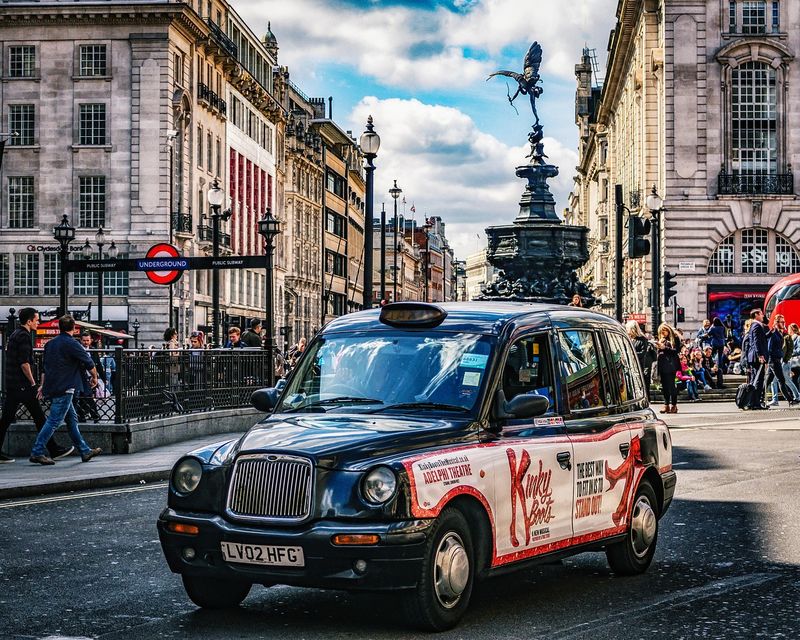
Tip! One of the troubles with doing things independently is that an empty bus or taxi makes no money, so if you’re not someplace busy or popular, every taxi you spot is likely already full, meaning finding an empty one can often take longer than just waiting in line other places. Make sure you factor that in when doing your calculations. Also know that while Lyft and Uber are getting more popular the world over, they still aren’t everywhere yet and you need a WIFI or data connection to hail them.
The second thing we learned on this journey is that location matters. Had we chosen to take the larger, busier ferry from Spain, we would have been descended on by a horde of touts and forced to overpay for a taxi or bus back into the city. By going with the slightly smaller ferry that landed right in town, due to the much shorter customs lines and no need for a taxi, we actually ended up saving both time and money getting exactly where we needed to be with much less hassle.
So sometimes a smaller border crossing makes more sense than a larger border crossing. However, always do your research, because smaller border crossings often have reduced hours and if there is a problem it can often take longer to sort out due to lack of staff or language issues.
Airports and the need for due process
While the above examples deal more with border crossings in Southeast Asia and Morocco, many European border crossings come with their own issues. From ever changing paperwork, to hidden airport fees, to tighter time allowances and banned items not allowed on flights, sometimes it can be more work to cross from one European or North American country to another.
While you may , or may not, have to deal with as much corruption, sometimes bureaucracy can make a border crossing nearly unbearable.
On top of that, when 9/11 hit the USA, airports and even land border crossings changed how every country around the world now dealt with border crossings. Increased security increased lineups, which in turn increased wait times. Now that’s all good from a safety aspect, but it can make the whole process wish you stayed home.
Luckily, these are generally easier to navigate. Besides for a lost pocket knife or two, some nail clippers years ago, and more drinks than I’m comfortable admitting to (when you have kids you carry liquids, what can I say) we haven’t been overly affected by European or North American style border crossings.
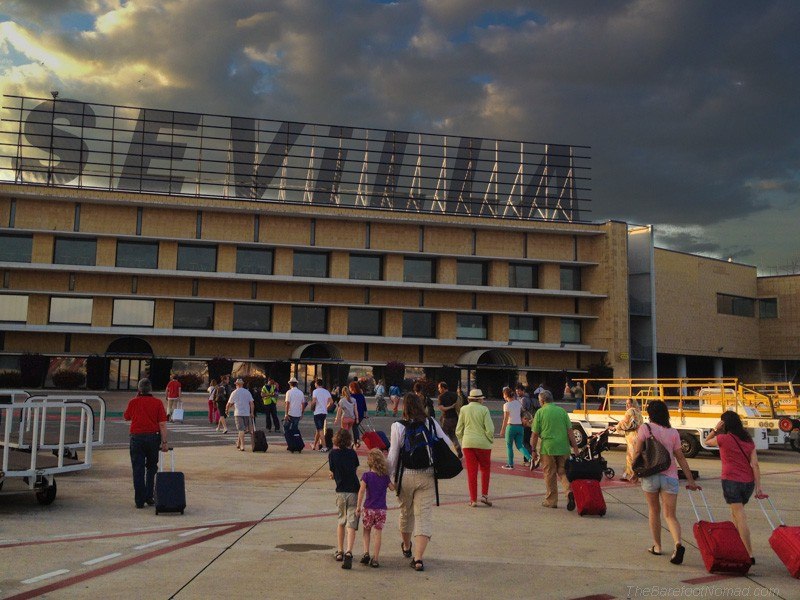
Now that doesn’t say how many times we barely made a connecting flight due to overlong customs lineups or having to run a mile through an oversized airport with a carryon and a small child in my arms, but there are a few stories of insight in there.
Like the time we got off a plane into Columbia and all the Canadians on board were herded into a line far from all the rest of the passengers in customs and had to pay a $80 a person fee, since Columbia was annoyed that Canada was charging them a similar visa entry fee.
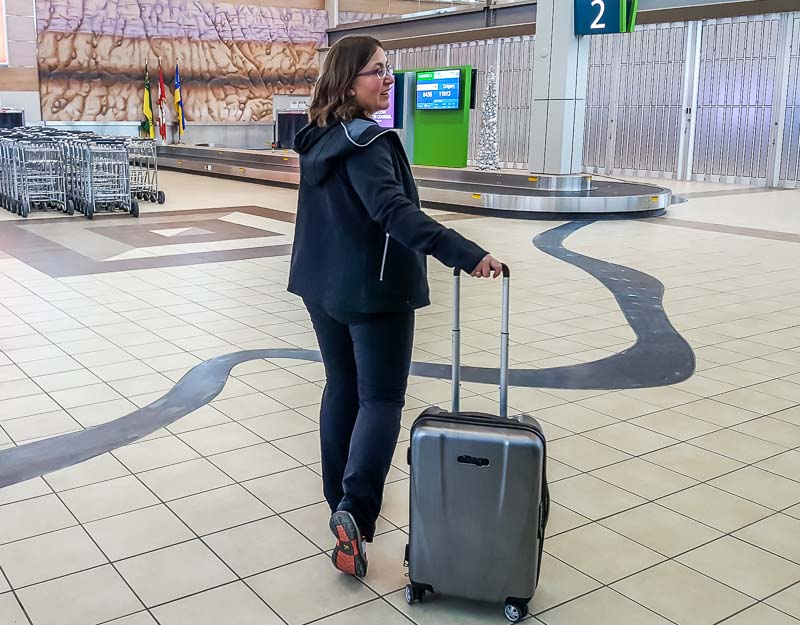
The frustration and annoyance in that lineup was almost scary. Since the credit card machine was down, any people without the cash were stuck in customs until either the machine got repaired or they came up with the money. Luckily, we had cash on us.
That brings up an important tip, always travel with some USD currency (it’s the most widely accepted the world over) and some local currency. We’ll often grab some local currency at the first ATM we come across the airport however, be careful because sometimes these have extra fees. Another classic option is to convert some money before we go or hit an in airport currency house and change some money over. (Again be careful they don’t severely overcharge you.)
Many airports around the world have fees as you pass through customs that aren’t prepaid with your ticket. While most accept credit cards, it never hurts to have a few extra dollars to cover the costs.
In this particular instance they wanted us to pay for the kids as well, but we managed to talk them out of it. So again, be nice but feel free to question things.
Beware the layover in a foreign country
Another example of issues of border crossings is the dreaded layover.
As Canadians, we often fly through the US to get down south. Whether we’re headed to Mexico, the Caribbean, Central or South America, the odds are that we’ll have to switch planes somewhere in the US. While this isn’t a problem per say, this also means that we have to go through US customs regardless of where we eventually end up.
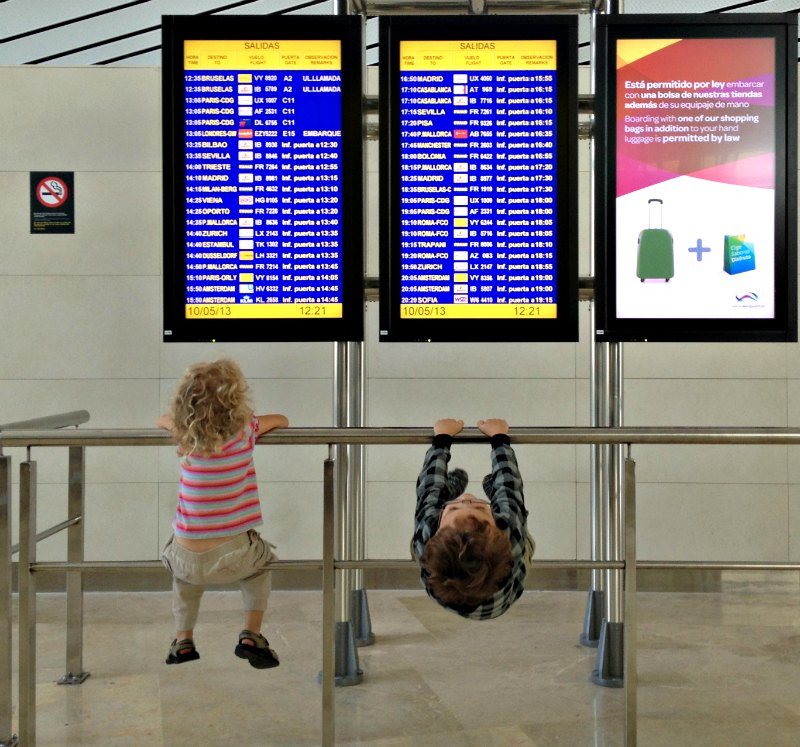
This means getting out of the plane, grabbing all our things and then going through US customs before doing it all again for the next country. This process often takes longer than we expect and is why we never book flights too close together when traveling through another country. To be honest, more often than not, we’ll usually take the opportunity to explore whatever city we land in for a day or two since we have to go through customs regardless.
Now the biggest issue with this is that next to increased time, while you are in that layover country you are under the same laws as if you are staying there regardless of never leaving the airport.
For instance, on one trip, our son’s passport developed a rip that we hadn’t noticed. Of course it had to be the main page, but the rip wasn’t big and didn’t really affect the ability to read the passport. It hadn’t even ripped completely off. However, as we passed through US customs on our way to Mexico the US customs agent said that they wouldn’t allow a defaced passport to enter the country. Never mind that our son was six years old or that we were literally on our way to our next flight out of their country within the hour.
At that point we were already in the US and would have needed to get back on a plane home or somehow managed to get a new passport issued via the Canada Embassy without leaving the airport. Either way it meant time and lots of money to cancel all our plans.
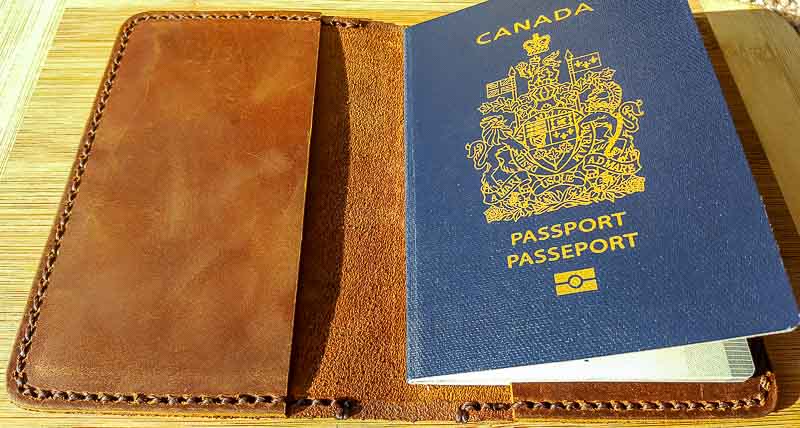
Luckily in this instance, their boss was within hearing distance and eventually came over to see what all the fuss was. After listening to the customs agent and then looking at us he grabbed a piece of tape, taped the ripped passport and sent us on our way.
The lesson in this story is that no matter your destination, any customs agent, regardless of how close you are to a border has the power to refuse you entry and can severely impede your travels. A second lesson is to always be prepared and in this specific case, make sure your passport and any needed visas are in order before you leave your current location.
Tips for mastering border crossings like a pro
No matter where you travel to, the minute you exit one country you’re crossing into another. Sometimes this can be as easy as tilting your seat back and ordering another drink and sometimes it can mean grabbing every piece of luggage you have and navigating an endless horde of touts or, even worse, bureaucrats.
Regardless of how you got there, there are always a few things to remember.
The first is to do your homework. A few minutes of research is all it takes to let you know what to expect and what steps you’ll need to take to keep your travels going smoothly. Don’t always expect that someone there will make it easy for you. It might come as a shock to some people, however it’s very likely that many, many people have done whatever you’re attempting to do and at least one or two have thankfully written it down to help you out.
Secondly, relax. Take a breath. Check out what’s happening around you. Almost no situations have gotten better because someone got angry or careless.
If you’re surrounded by touts, choose one and move on or tell them all no thank you and decide for yourself what you want. You might decide that it’s easier to pay their inflated prices than argue for a better deal. Chances are the price isn’t so extravagant that it’s worth your energy. Especially after a long day on the road.
If you’re dealing with bureaucracy, God have mercy on your soul. Haha, just kidding. Chances are that everything will be sorted out and you’ll be on your way eventually. Just be patient and keep calm. If things really aren’t going your way, try to find their boss or someone else who is more sympathetic to your needs.
Be safe! While ports and border crossings are generally secure, they’re also an area of confusion for some. Always be vigilant and pay more attention to your bags, since areas of change usually also means it’s an area of opportunity. Now is the time for you to take that opportunity to get your bearings, don’t let someone take that same opportunity to take your stuff.
Above all, enjoy the journey! As you exit one country, you’re entering a new one. Those first few moments might create a lasting impression on you. Don’t judge a country by its initial lack of infrastructure or its overdemanding one.
While ports of all kinds are great places to meet people from other countries, they’re not necessarily the best to meet the locals. Give it time, you’ll have plenty of it once you get out there experiencing whatever brought you there in the first place.
Lastly, have Fun! After all, isn’t that why we all travel in the first place.
Have any great border crossing stories you want to share? Maybe you have a great tidbit of advice to give. Leave us a comment down below.






